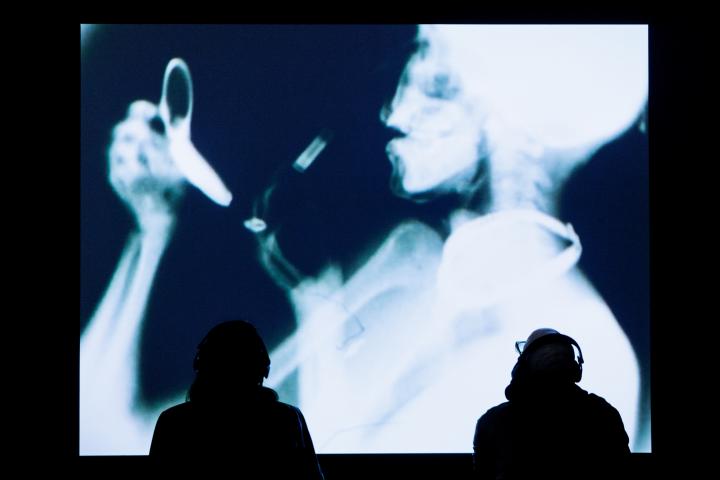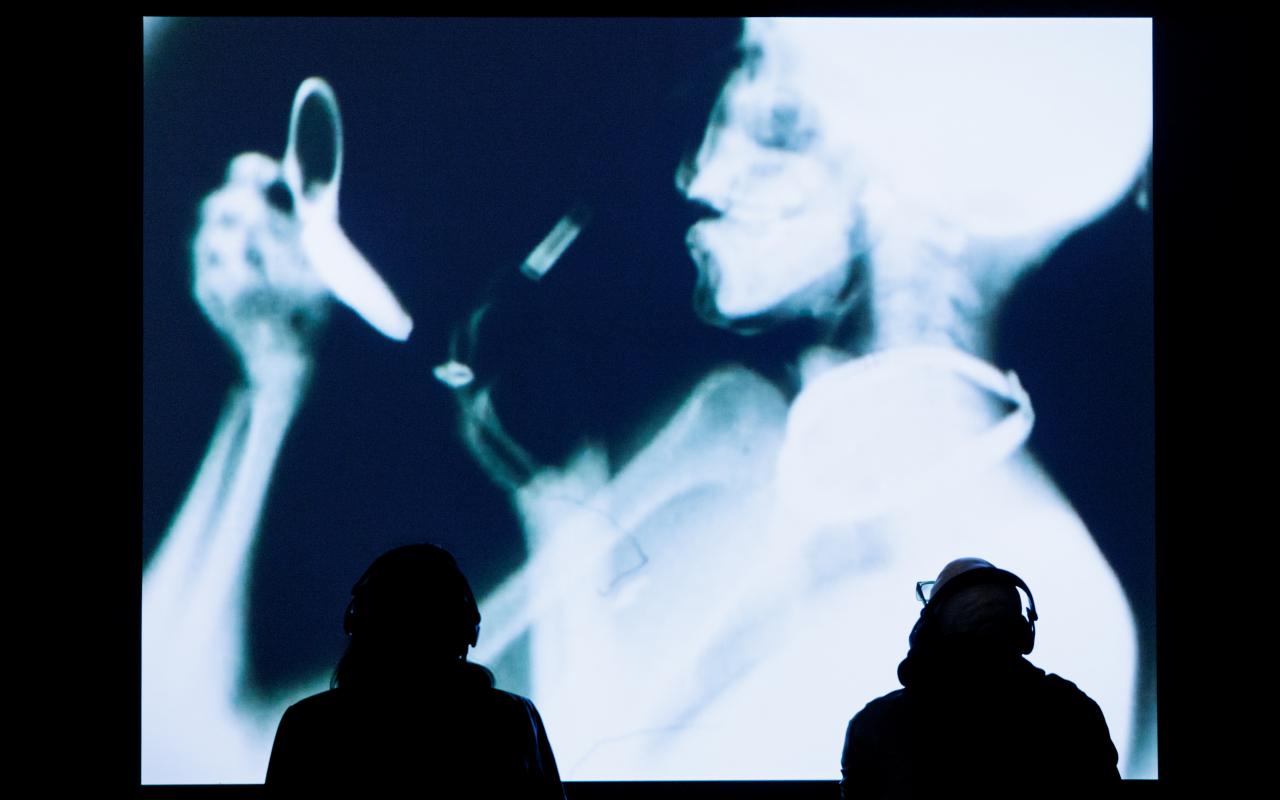Barbara Hammer
Sanctus

- Artists
- Barbara Hammer
- Title
- Sanctus
- Year
- 1990
- Medium / Material / Technic
- 16-mm film, transferred to video, color and b/w, sound, 18:18 min.
-
The found-footage film »Sanctus« shows an extraordinary poetization of the human body, revealing mundane, uncanny, and artificial aspects at the same time. While visiting George Eastman House in Rochester, USA, the artist found 35-mm films containing x-ray footage. These films were created by James Sibley Watson, who is credited with inventing cineradiography (x-ray cinematography) in the United States during the 1950s.
Barbara Hammer created a montage of Watson’s clinical footage showing human skeletons during every-day acts, editing the film sequences with artistic means such as colorization, cross-fading, split screening, disturbed images, flickering aesthetics, painting over, reverse playback, and mirroring. Throughout the film, the focus moves further and further away from the content and towards the sensual expression of the footage. This procedure is characteristic of classic avant-garde films, which aim to reorient viewers away from an identificatory gaze and towards the inherent qualities of the images themselves.
And even though – or maybe precisely because – the film almost devolves into pure play of light, the themes of sickness and death remain present. X-rays of the human skeleton were seen as a »memento mori« almost immediately after their first unveiling by Wilhelm Conrad Röntgen. For Hans Castorp, the protagonist in Thomas Mann’s novel »The Magic Mountain« (»Der Zauberberg«, 1924), “by the powers of the light ray, the flesh in which he walked [is] disintegrated, annihilated, dissolved in vacant mist […]”
The electro-acoustic score »Sanctus« by Neil B. Rolnick emphasizes the theme of disintegration with solemn vocal intonations and crackling noises.
